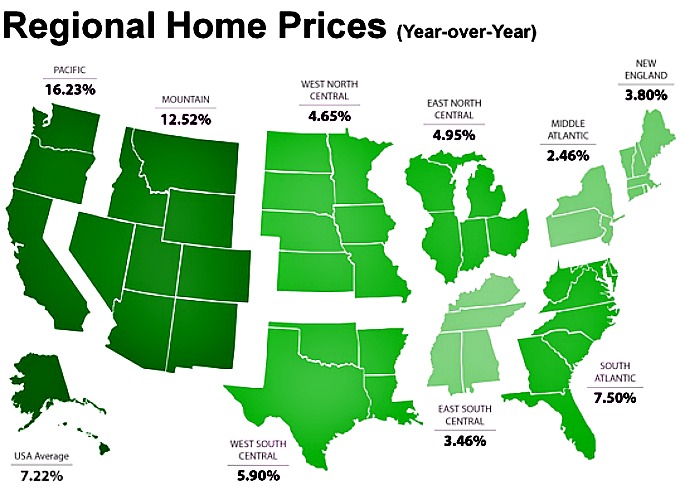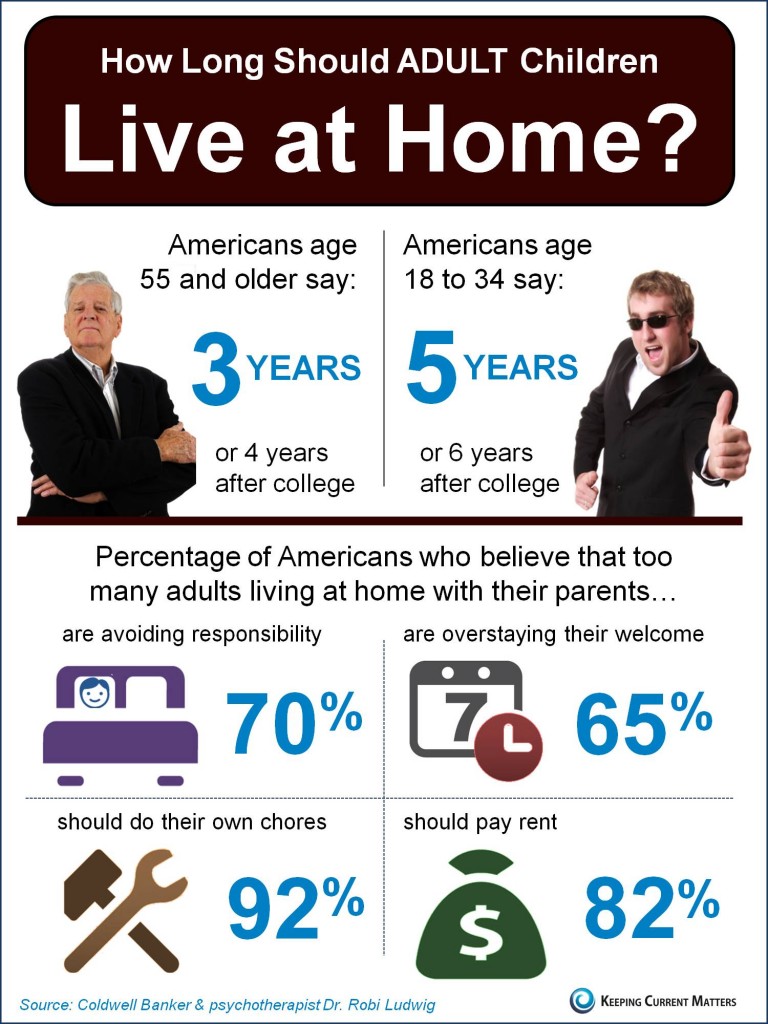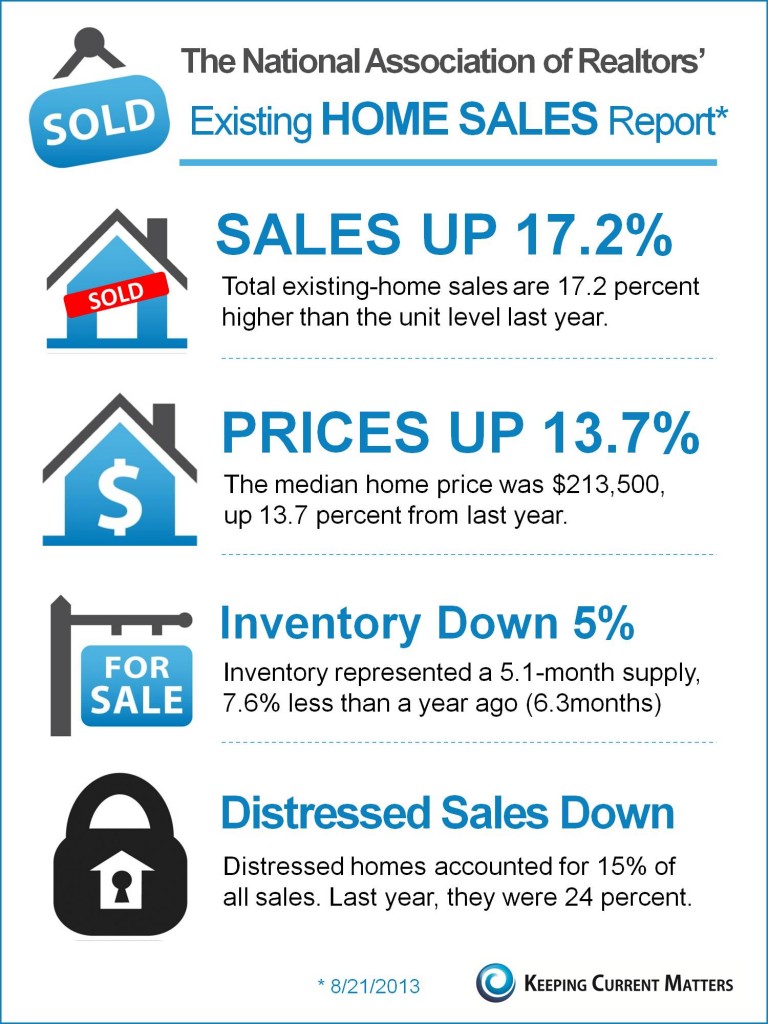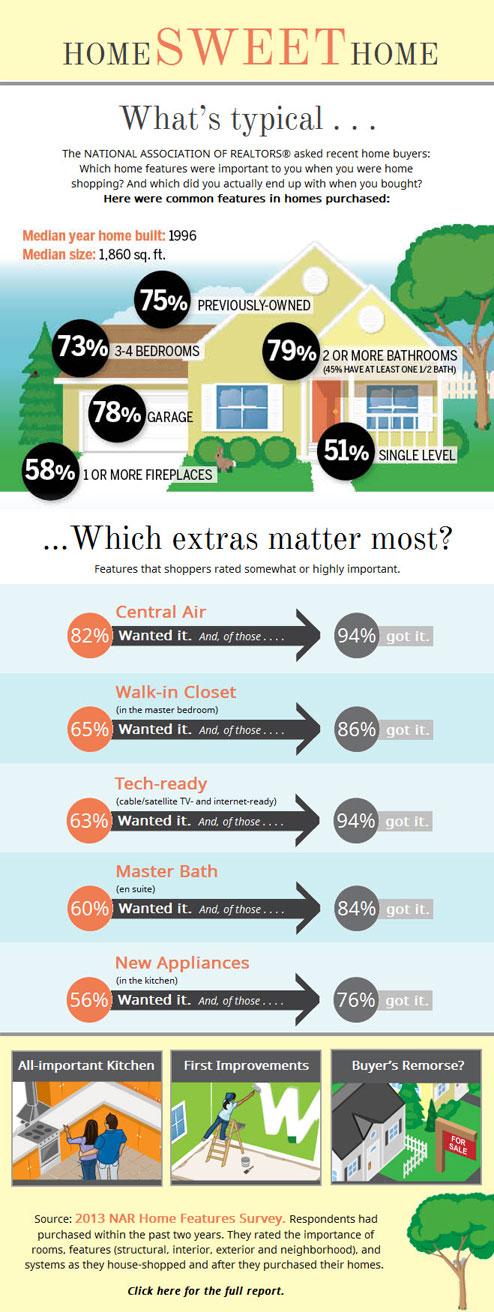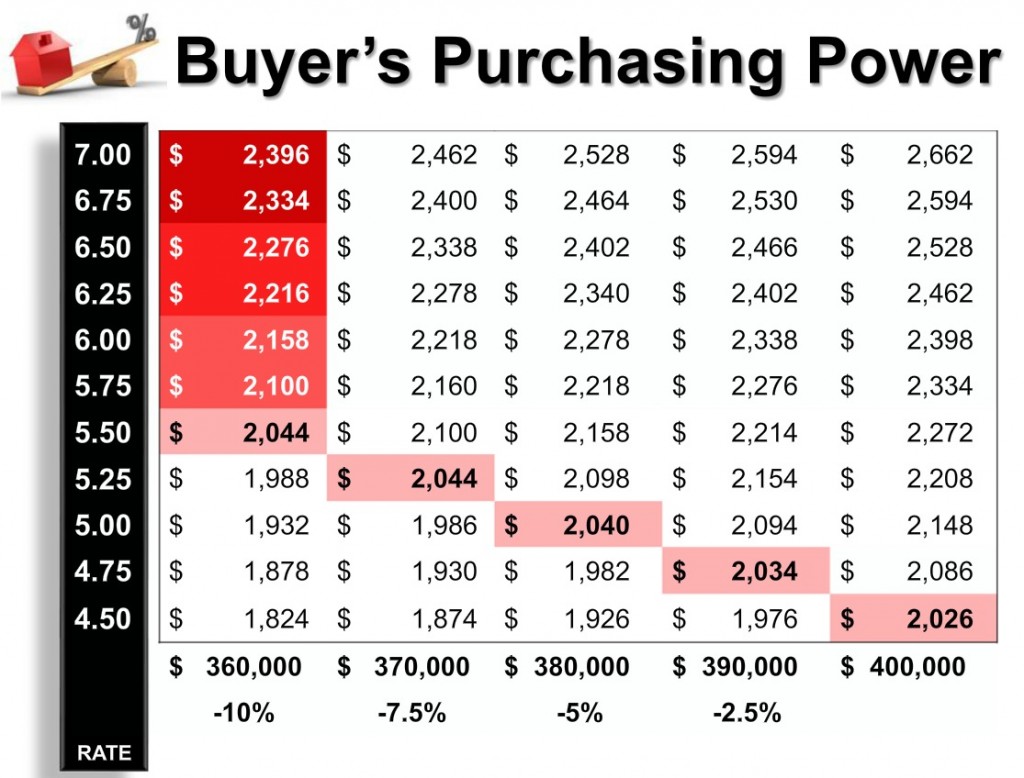How The West Was Won: Home Prices by Region
How Long Should Adult Children Live At Home?
From our friends at KCM.
What Are Millennials Looking For in A Home?
A survey of homebuyers between the ages of 18 and 35, conducted by Better Homes and Gardens Real Estate, indicates that a significant number of Millennials are willing to purchase fixer-uppers and even do the home improvement themselves. Millennials also value character-robust homes that represent their personal and unique style. Watch the video for more information on what appeals to this demographic of 100 million individuals. –
Our Changing Housing Market
The housing market has changed a lot over the last 40 years, with the number of home sales, the size of homes, and the cost of homes all changing since the 1970s. Check out this great infographic below to see the ups, and downs, of the housing market over the last 40 years.
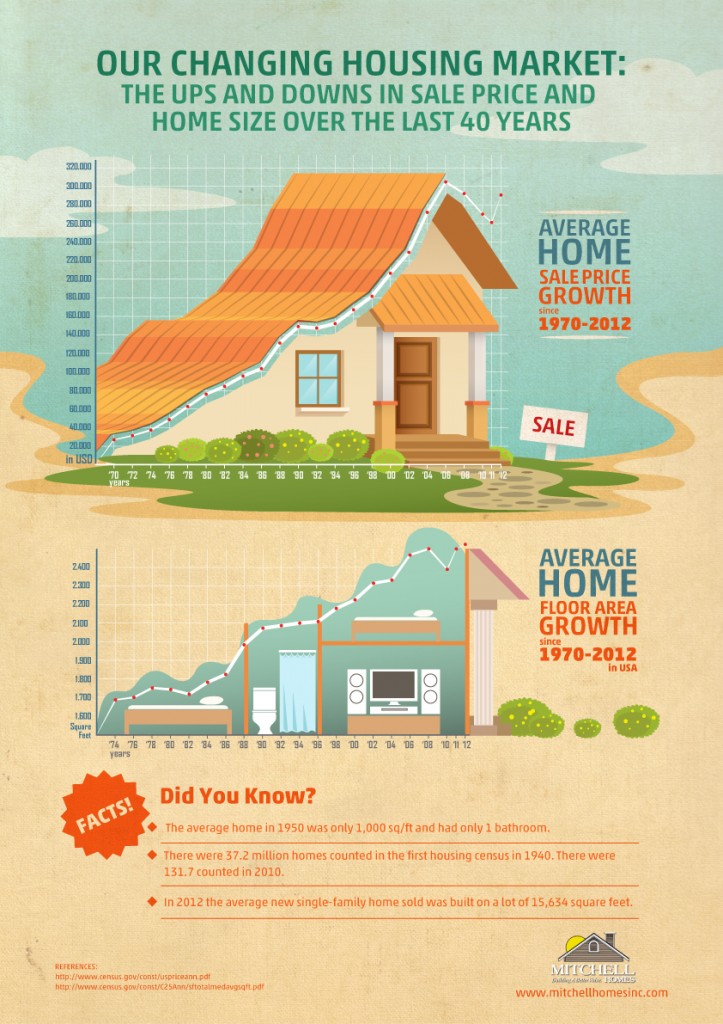 source: MitchellHomesInc.com
source: MitchellHomesInc.com
Household Formation: Pent-Up Demand Is High
 The current rate of household formation in the United States is still well below the expected trend and faulted as a major culprit for “pent-up demand.” According to an analysis by Trulia, an online residential real estate site, potentially 2.4 million households are hitting the pause button. The majority of that number is comprised of young people between the ages of 18 and 34 who have delayed moving out on their own for a variety of reasons.
The current rate of household formation in the United States is still well below the expected trend and faulted as a major culprit for “pent-up demand.” According to an analysis by Trulia, an online residential real estate site, potentially 2.4 million households are hitting the pause button. The majority of that number is comprised of young people between the ages of 18 and 34 who have delayed moving out on their own for a variety of reasons.
An average of 1.1 million new households are formed each year in the United States. But from the first quarter of 2008 to the first quarter of 2011, just 450,000 new households have been added on an annual basis. This sluggish rate means a decrease in the overall demand for housing, which affects the annual construction rate. But this “pent-up demand” driven by young adults who are still living at home or doubling up with roommates is bound to give way, say some housing experts.
Will household formation increase sooner or later? Housing Wire is optimistic, reporting that the conditions are better today for emerging households. Steady job growth over the last several years is a good sign. Sterne Agee analyst Jay McCanless says, “We believe steady, if unremarkable, monthly job growth is creating a…household formation environment for 2013 which should support our positive housing outlook.”
If that projection holds true, increased demand is merely a matter of time. When households come out of hiding looking for single- and multi-family residences or apartments, they could potentially inundate the market.
2013 Home Features Survey
Is It Time To Buy? If Interest Rates Matter To You, It Is
The question on so many home buyer’s minds is, “is it time to buy?” In some circumstances it is. For those requiring a mortgage, the rates available today would indicate it’s time.
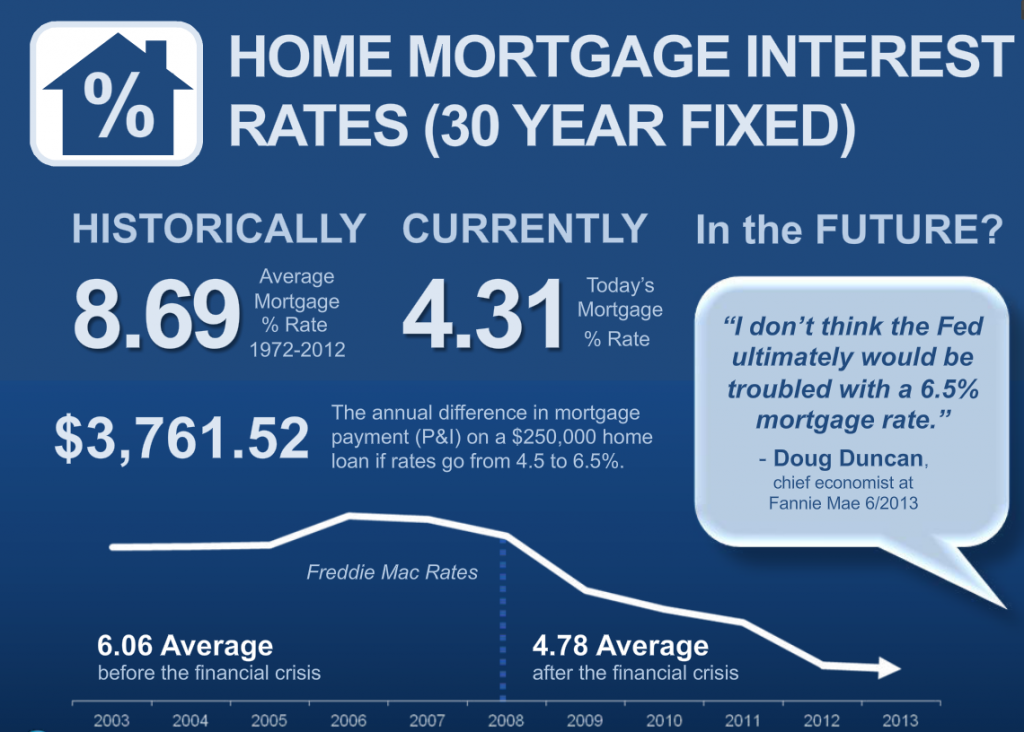 Those rates impact buying power. Here’s a simple chart demonstrating what interest rates increasing does to buying power.
Those rates impact buying power. Here’s a simple chart demonstrating what interest rates increasing does to buying power.
As a seller, this is why it is important to price at market value. The longer you stay on market, the buyer pool of your home may shrink due to these rates.
REAL Trends July 2013 Market Report
 The July 2013 report shows that the rate of housing sales increased strongly in June 2013 growing 10.2 percent from June 2012. The annual rate of new and existing home sales for June 2013 was 5.612 million up from the 5.091 million recorded in June 2012 but down from the 5.984 million annualized rate in May 2013.
The July 2013 report shows that the rate of housing sales increased strongly in June 2013 growing 10.2 percent from June 2012. The annual rate of new and existing home sales for June 2013 was 5.612 million up from the 5.091 million recorded in June 2012 but down from the 5.984 million annualized rate in May 2013.
The average price of homes sold increased by 7.8 percent in June 2013 compared to June 2012.
July 2013 – The REAL Trends Housing Market Report showed that the combination of new and existing home sales in June 2013 continued to show strength across all regions in both unit sales and the average price of homes sold when compared to a year ago.
The annualized rate of the combination of new and existing home sales increased to 5.612 million in June 2013 up from the 5.091 million recorded in June 2012 but down from a rate of 5.984 million in May 2013.
The average price of homes sold in June 2013 was up 7.8 percent from the average price of homes sold in June 2012 marking the 15th consecutive month of increased home sale prices on a year over year basis.
Housing unit sales for June 2013 were up 14.6 percent in the South, the strongest showing in the country. The next highest region was the Midwest region at 12.5 percent, the Northeast region was up 6.3 percent and the West was up 4.7 percent.
The average price of homes sold in June 2013 increased 7.8 percent across the country, nearly the same increase as that recorded a month earlier. The West had the best results with the average price of homes sold increasing 15.5 percent followed by the Midwest region at 9.5 percent and the South at 9.3 percent. The Northeast saw a small decrease in average price coming in with a decrease of 0.3 percent.
“June 2013 sales of new and existing homes continued to show strength across all regions and are evidently shaking off the impact of relatively low inventories in most markets. The two regions of the country with the lowest average sales prices, the South and Midwest, continue to outperform other regions in terms of unit sales increases. The average price of homes sold was up solidly again due to supply and demand imbalances. As this report and other housing indicators show the scarcity of inventory and buyer demand are creating a situation where prices are advancing at far greater rates than had been predicted due to high levels of housing affordability and restricted inventory,” said Steve Murray, editor of the REAL TrendsHousing Market Report.
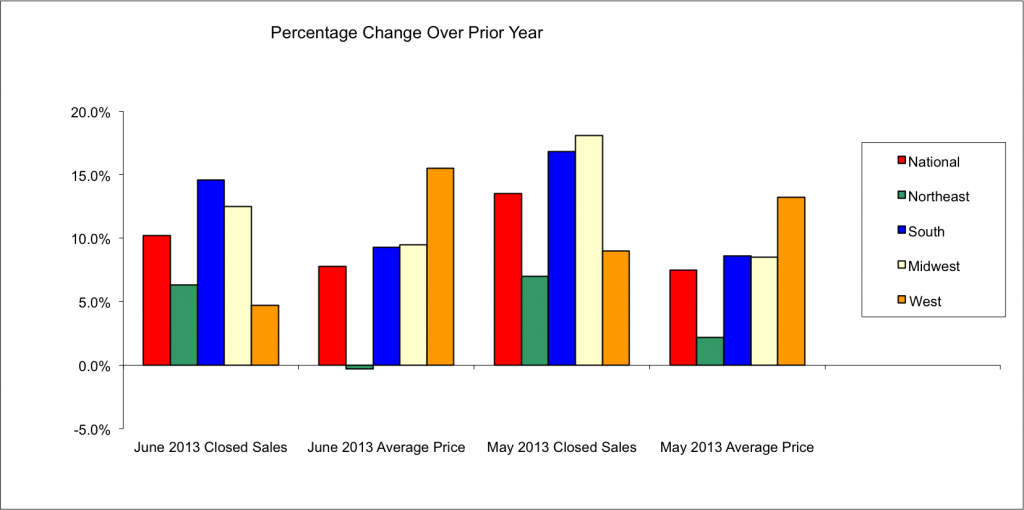 Via: REALTrends.com
Via: REALTrends.com
